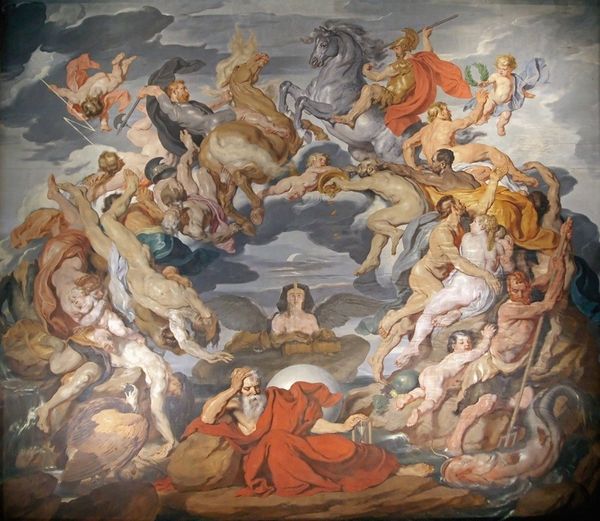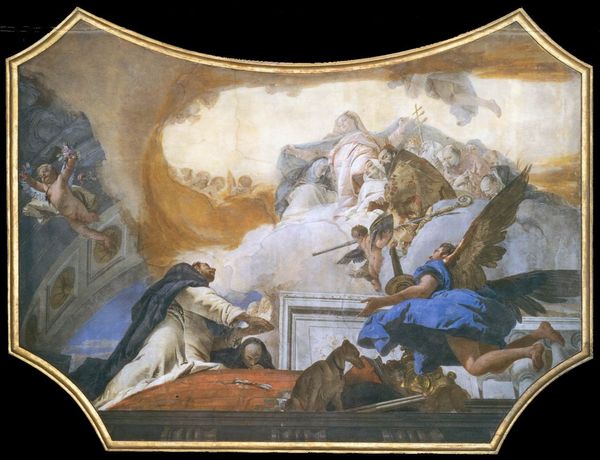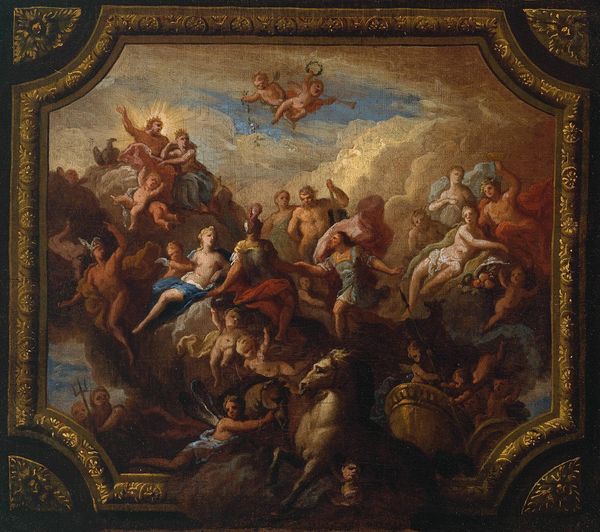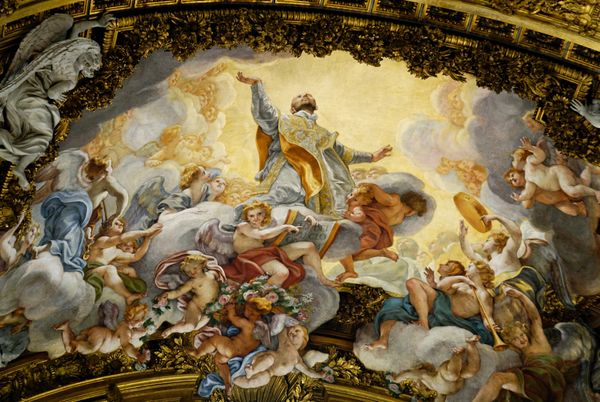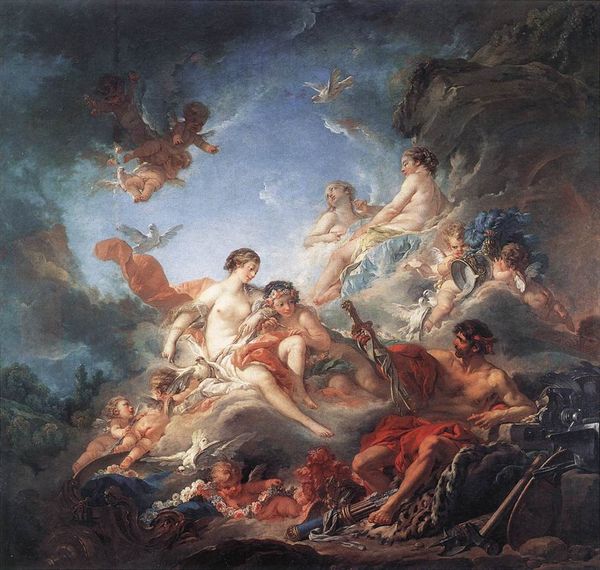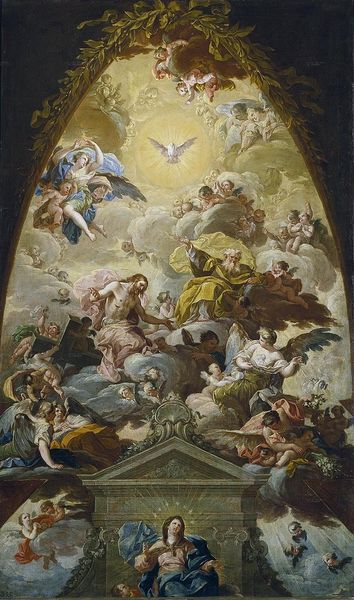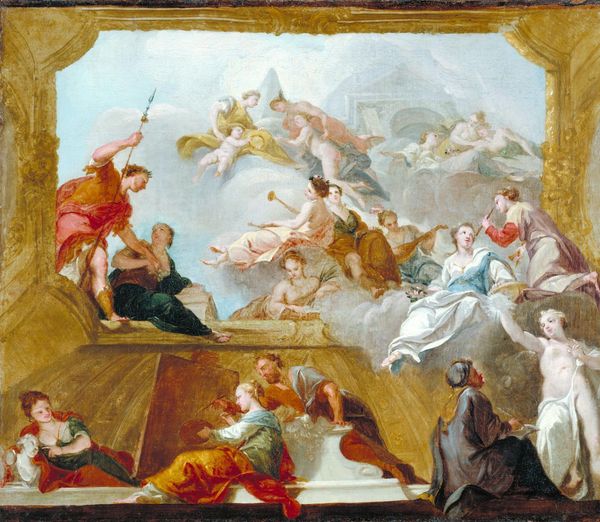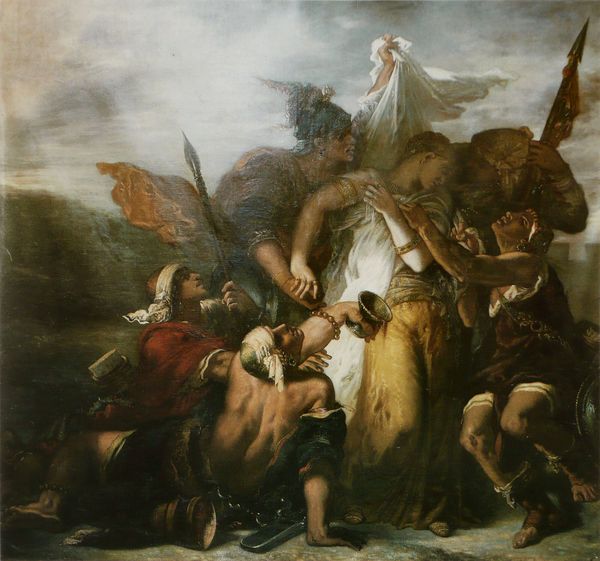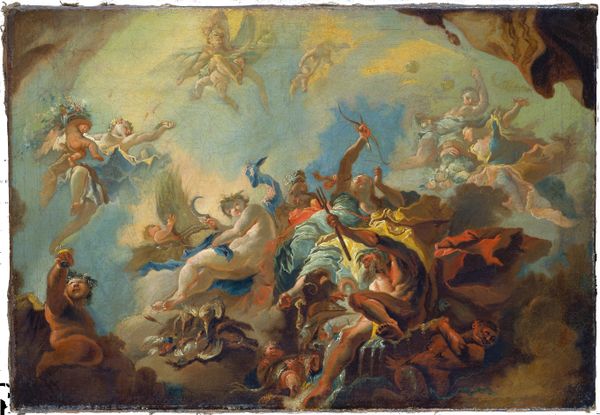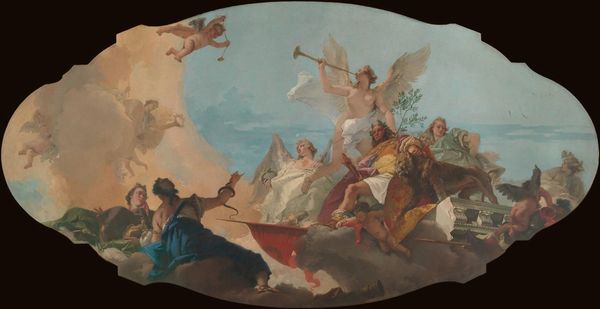
painting, oil-paint, photography
#
gouache
#
allegory
#
baroque
#
painting
#
oil-paint
#
figuration
#
photography
#
oil painting
#
mythology
#
history-painting
#
watercolor
Copyright: Public domain
Editor: This is "Apollon et les Heures", or Apollo and the Hours, by Charles Le Brun. The work appears to be rendered in oil paint, and depicts what seems to be a heavenly scene. It feels quite chaotic at first glance. How would you begin to unpack such a complex composition? Curator: One might start by considering the dynamic arrangement of figures, observing the directional lines established by their poses and gestures. Note how Le Brun uses a spiraling composition, drawing the eye upward. How do you perceive the use of color here? Editor: Well, I see a limited palette, mostly earth tones, but with bursts of red and blue. It seems to create a sense of movement, like a dance. Are those colors purely decorative, or might they have some structural purpose? Curator: Precisely. Observe how those bolder hues punctuate the canvas, acting as visual anchors. Note the use of light and shadow to define form. How do you interpret the relationship between the figures? Editor: I think that the figures closest to the light source have a strong physical presence, in contrast to those engulfed in darkness, giving an overall sense of receding perspective. Are the varying degrees of visibility an organizational technique for guiding the eye around the image? Curator: Indeed. The contrast emphasizes spatial relationships, but also introduces dramatic tension. The disposition of forms enhances the overall decorative quality of the surface, something very much sought after in Baroque painting. Editor: So, beyond the narrative, it’s about how the elements are arranged and how they interact visually, even physically, on the canvas. Thanks. Curator: Precisely. Analyzing art as a construction, and considering its intrinsic formal values. An enlightening endeavor, wouldn’t you agree?
Comments
No comments
Be the first to comment and join the conversation on the ultimate creative platform.
